Author: Lucio Chachamovich

-
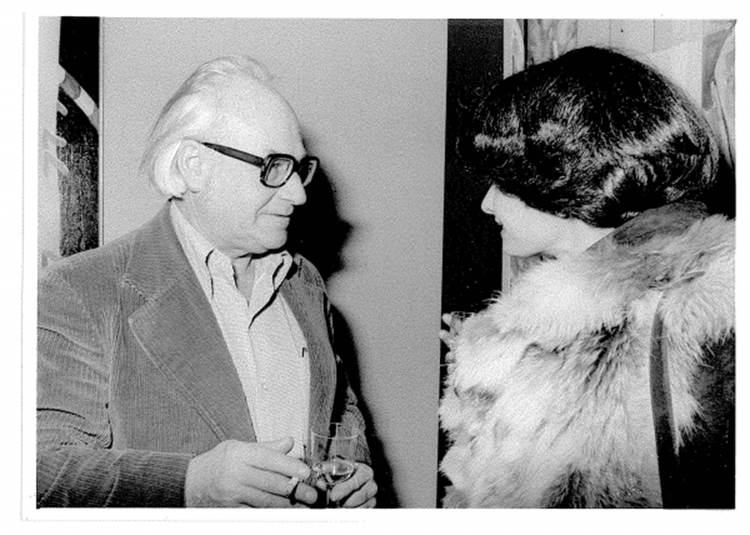 Alfred Pinsky at a vernissage, January 13, 1977.Photo Credit : Concordia University Records Management and Archives
Alfred Pinsky at a vernissage, January 13, 1977.Photo Credit : Concordia University Records Management and Archives -
 Alfred Pinsky, Bridge in Saskatoon, 1958, oil on hardboard, 61,3 x 91,5 cm.Photo Credit : Concordia University Records Management and Archives
Alfred Pinsky, Bridge in Saskatoon, 1958, oil on hardboard, 61,3 x 91,5 cm.Photo Credit : Concordia University Records Management and Archives -
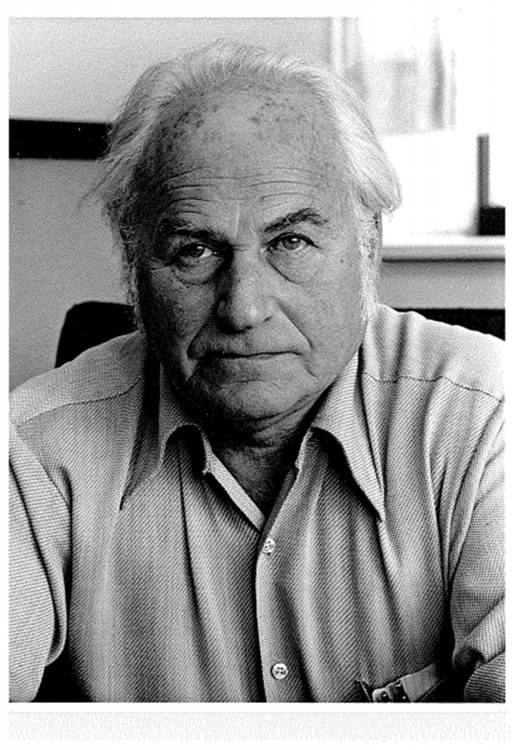 Alfred Pinsky, Concordia University Dean of Fine Arts, ca. 1980.Photo Credit : Concordia University Records Management and Archives
Alfred Pinsky, Concordia University Dean of Fine Arts, ca. 1980.Photo Credit : Concordia University Records Management and Archives
Alfred Pinsky
Montrealer Alfred Pinsky was an accomplished 20th century painter, as well as an art education pioneer.
Pinsky began his artistic training as an assistant to the Montreal artist Anne Savage at Baron Byng High School. He also took classes at the Art Association of Montreal (today the Montreal Museum of Fine Arts) and the Art Students League of New York. At the start of the Second World War, he enlisted in the Royal Canadian Air Force and moved to Nova Scotia, where he became involved in the union movement. Back in Montreal in 1947, he and his wife Ghitta Caiserman (a prominent Montreal painter and daughter of the activist and literary critic Hannaniah-Meir Caiserman) together founded the Montreal Artists School, which remained active into the early 1950s.
In the 1930s, Montreal’s Jewish community contributed considerable talent to Canadian painting. Pinsky’s contemporaries included artists such as Louis Muhlstock, Alexandre Bercovitch, Sam Borenstein, Moe Reinblatt and Ghitta Caiserman. Marked by the social and economic upheavals of their time — including the Great Depression, the Second World War and the rise of socialism — they helped to define modern painting in Canada.
Pinsky’s interest in socialism and public art took him to Mexico in 1948, and the mural painters he met there would have a lasting influence on his work. His own production included a mural created for a clothing factory on St. Lawrence Boulevard that was owned by his mother-in-law, Sarah Wittal-Caiserman, a leftist Zionist and patron of the arts. In 1962, he became the dean of the new department of Fine Arts at Sir George Williams University (now Concordia University), a position he held until 1980.
Throughout Pinsky’s life, he advocated for the role of art in education, a commitment that led him to found the Child Art Council and to chair the Canadian Society for Education through Art. Pinsky was also an art critic for the Canadian Broadcasting Corporation and Canadian Art, as well as an essayist. His best-known piece of writing on art, “A Study of the Work,” was published to mark a retrospective exhibition of the work of Goodridge Roberts in 1969.
Special thanks to the Museum of Jewish Montreal.
Learn More:
http://imjm.ca/location/2170
http://mimj.ca/location/2164
https://app.pch.gc.ca/application/aac-aic/?fID=2&lang=en&pID=824&ps=50&qlang=en&rID=13118&sort=AM_ASC

-
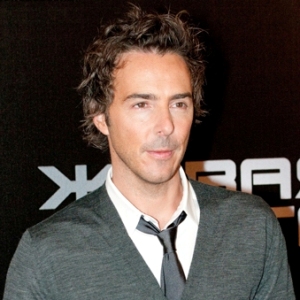 Shawn Levy, 2011.Photo Credit : Mikhail Popov
Shawn Levy, 2011.Photo Credit : Mikhail Popov -
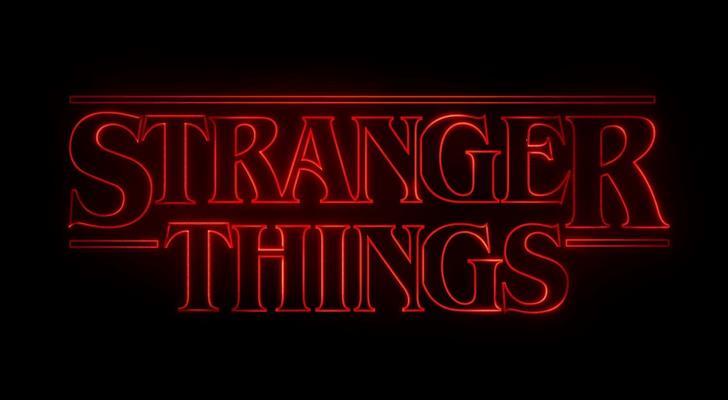
-
 Shawn Levy.Photo Credit : Collider
Shawn Levy.Photo Credit : Collider -
 Shawn Levy.Photo Credit : Aceshowbiz
Shawn Levy.Photo Credit : Aceshowbiz
Shawn Levy
Shawn Levy is a Canadian film producer and actor, as well as one of the most commercially successful filmmakers of the past decade, grossing $2B cumulatively at the worldwide box office.
Born in Montreal to Jewish parents, he attended St. George’s High School, studied acting at the Stagedoor Manor Performing Arts Training Center in New York and went on to major in Performing Arts at Yale University.
In 1986, Levy starred in his first acting role: Zombie Nightmare (1986), a low-budget horror film that was later featured on Mystery Science Theater 3000. He has since gone on to make appearances in films and TV shows including 21 Jump Street; Beverly Hills, 90210; and 30 Rock.
Levy has directed a number of Hollywood hits including Big Fat Liar, Just Married, Cheaper by the Dozen, The Pink Panther, Date Night, the Night at the Museum series, and The Internship. His television company, 21 Laps/Adelstein, produced the ABC hit Last Man Standing with Tim Allen.
Levy has earned recent acclaim for his work as the executive producer of Netflix’s Stranger Things.
Levy and his wife, Serena, have four children.
Learn more:
https://en.wikipedia.org/wiki/Shawn_Levy
http://www.imdb.com/name/nm0506613/
http://www.hollywoodreporter.com/news/shawn-levy-netflixs-stranger-things-912010
http://montrealgazette.com/entertainment/celebrity/the-screen-never-goes-dark-for-stranger-things-producer-shawn-levy

-
 Photo Credit : coreyhart.com
Photo Credit : coreyhart.com -
 Photo Credit : coreyhart.com
Photo Credit : coreyhart.com -
 Photo Credit : coreyhart.com
Photo Credit : coreyhart.com -
 Photo Credit : coreyhart.com
Photo Credit : coreyhart.com -
 Photo Credit : coreyhart.com
Photo Credit : coreyhart.com -
 Photo Credit : coreyhart.com
Photo Credit : coreyhart.com
Corey Hart
Corey Hart is a Montreal-born singer-songwriter, best known for his hit singles “Sunglasses at Night” and “Never Surrender.”
Hart comes from a boisterous Ashkenazi Jewish family, and is the youngest of five siblings. As a child, he lived in Montreal, Mexico City, and Key Biscayne (Florida), becoming fluent in French, Spanish, and English. He signed to a major label, Aquarius Records, at just 20 years old.
Worldwide, Hart has sold over 16 million records, scoring nine Top 40 hits on the US Billboard charts, and 30 top 40 single hits in Canada. He also wrote and produced several songs for Celine Dion. He has received the JUNO, ADISQ, and ASCAP awards, and was nominated for the Grammy Award for Best New Artist in 1984. He has a joint venture record label deal called Siena Records.
Hart and his wife, singer Julie Masse, live in the Bahamas with their four children. He largely retired from his singing career after starting a family. However, after a 12-year hiatus, he performed to a sold-out crowd at the Montreal Bell Centre Arena in 2014, called One Night—Three Decades of Music, and released his autobiography, Chasing the Sun.
Learn more:
http://www.coreyhart.com/?page_id=12
http://www.huffingtonpost.ca/2014/06/16/corey-hart-retirement-interview_n_5480098.html
http://www.mtv.com/artists/corey-hart/biography/
http://www.montrealgazette.com/entertainment/story.html?id=8974914/
http://www.worldcat.org/title/chasing-the-sun-my-life-in-music/oclc/910938068
http://www.worldcat.org/title/tribute-to-edith-piaf/oclc/30998549

-
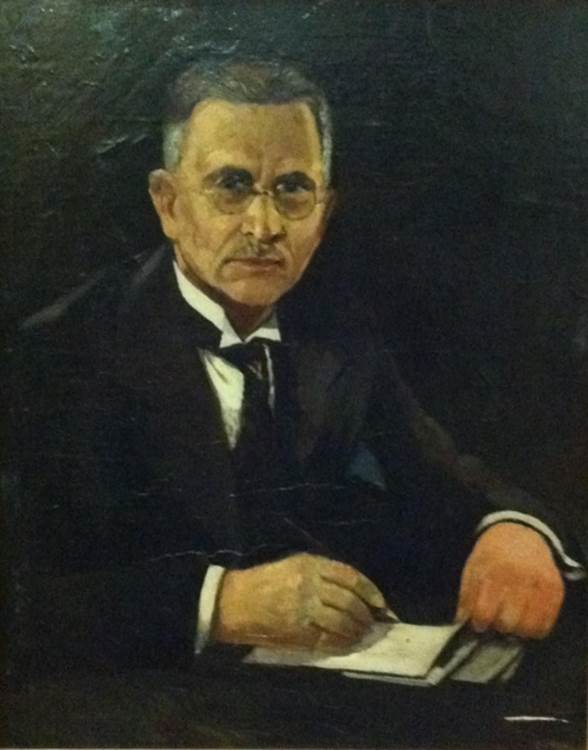 Portrait of A. L. Kaplansky by Alexander Bercovitch. Undated.Photo Credit : Alex Dworkin Canadian Jewish Archives
Portrait of A. L. Kaplansky by Alexander Bercovitch. Undated.Photo Credit : Alex Dworkin Canadian Jewish Archives -
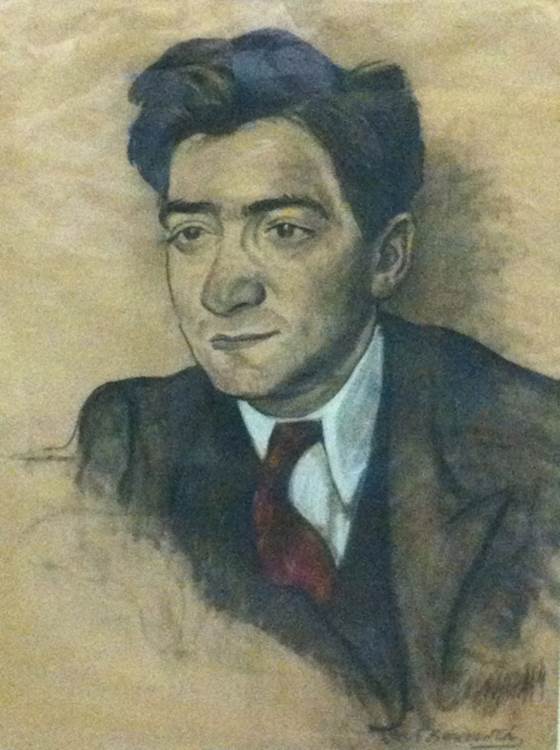 Portrait of poet Shabse Perl drawn by Alexander Bercovitch.Photo Credit : Alex Dworkin Canadian Jewish Archives
Portrait of poet Shabse Perl drawn by Alexander Bercovitch.Photo Credit : Alex Dworkin Canadian Jewish Archives -
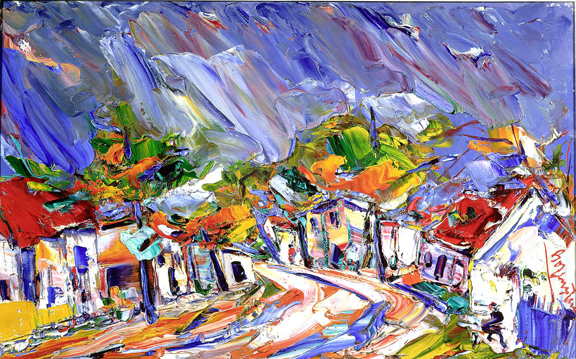 Sam Borenstein, Ste. rose quebec, 1956, oil on canvas, 51x81 cm.Photo Credit : © Borenstein Estate
Sam Borenstein, Ste. rose quebec, 1956, oil on canvas, 51x81 cm.Photo Credit : © Borenstein Estate -
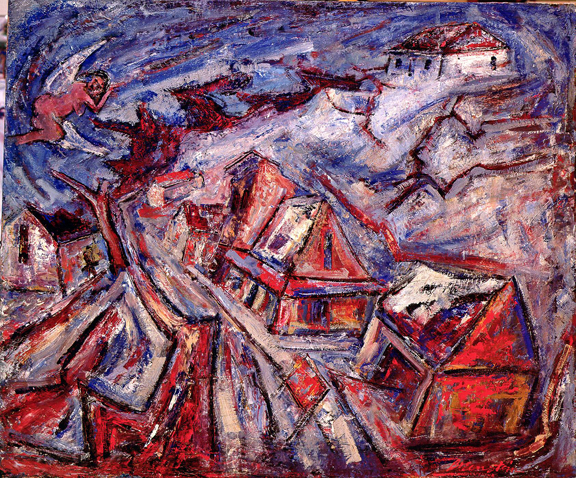 Sam Borenstein, Composition in red and blue, 1944, oil on canvas, 107x72 cm.Photo Credit : © Borenstein Estate
Sam Borenstein, Composition in red and blue, 1944, oil on canvas, 107x72 cm.Photo Credit : © Borenstein Estate -
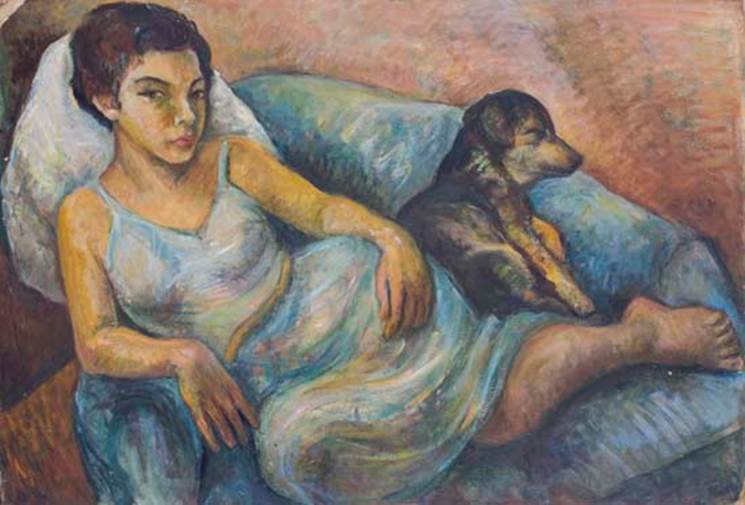 Rachel and Princie (1959), Sylvia Ary.Photo Credit : Sylvia Ary
Rachel and Princie (1959), Sylvia Ary.Photo Credit : Sylvia Ary -
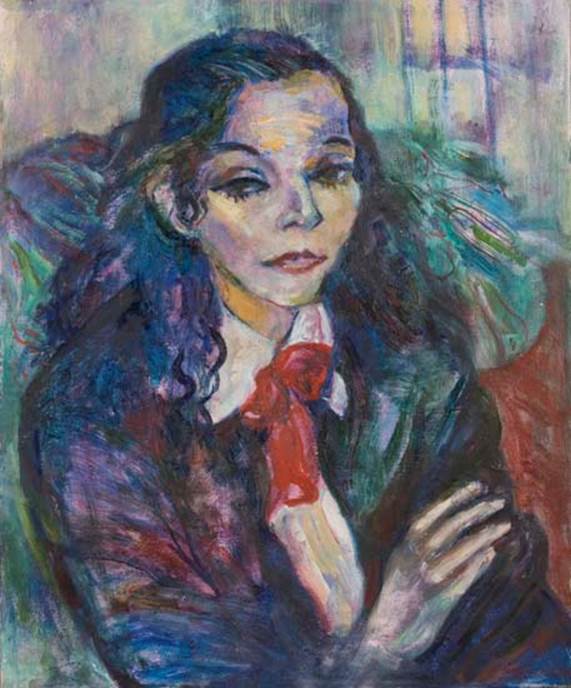 Model. 1991.Photo Credit : Sylvia Ary
Model. 1991.Photo Credit : Sylvia Ary -
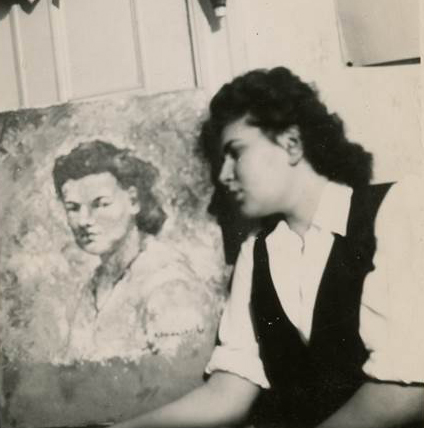 Rita Briansky.Photo Credit : Jewish Public Library - Archive and Rita Briansky
Rita Briansky.Photo Credit : Jewish Public Library - Archive and Rita Briansky -
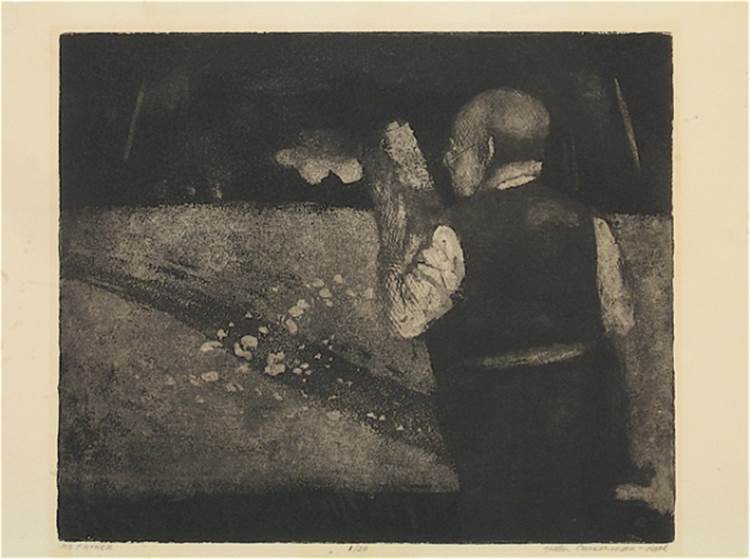 Untitled work by Ghitta Caiserman-Roth, 1975.Photo Credit : Alex Dworkin Canadian Jewish Archives
Untitled work by Ghitta Caiserman-Roth, 1975.Photo Credit : Alex Dworkin Canadian Jewish Archives -
 Alfred Pinsky, Bridge in Saskatoon, 1958, oil on hardboard, 61,3 x 91,5 cm.Photo Credit : Concordia University Records Management and Archives
Alfred Pinsky, Bridge in Saskatoon, 1958, oil on hardboard, 61,3 x 91,5 cm.Photo Credit : Concordia University Records Management and Archives
The Jewish Painters of Montreal
The Jewish Painters of Montreal refers to a loosely affiliated group of Jewish artists, spanning three generations, who produced work from the early 1930s until the early 1950s.
The name “The Jewish Painters of Montreal” was first coined by Quebecois art curator and historian Esther Trépanier, while she was working on a 1987 group exhibition of their work for the YM-YWHA (Young Men’s – Young Women’s Hebrew Association). Due to their varying age and affiliations with other art collectives throughout Montreal, the artistic styles of the collective vary widely, ranging from a radical social realism to a dramatized expressionism. Nonetheless, these artists captured a moment in Montreal’s history, united in their portrayal of the downtown working class and the city’s urban landscapes, as well as their Eastern European leftist idealism.
Each of the painters was either a recent immigrant from the shtetls of Eastern Europe, or a child of those same immigrants. As such, the artists and their cultural production reflect an international Jewish sensibility previously unseen in the Canadian art scene. The early generation of established Jewish artists included painters Alexandre Bercovitch (1891-1951), Eric Goldberg (1890-1959), and Bernard Mayman (1885-1966). The second generation of artists included painters Sam Borenstein (1908-1969), Louis Muhlstock (1904-2001), Ernst Neumann (1907-1956), Fanny Wiselberg (1906-1986), and Jack Beder (1910-1987). The third generation included Sylvia Ary (1923-2011), Rita Briansky (1925-), Ghitta Caiserman-Roth (1923-2005), Moses (Moe) Reinblatt (1917-1979), and Alfred Pinksy (1921-1999).
The Jewish Painters of Montreal depicted the social realities of their day, often reflecting on the hardships and inequalities that faced Jewish immigrants. The socialist slant of the artists’ work also responded to anti-Semitism, both in fascist Germany and Quebec, where the restrictive Padlock Act threatened to have any building associated with communism or bolshevism shut down for a year, and socialists and communists thrown in jail. Moses Reinblatt enlisted in the Royal Canadian Air force in 1942, and was an official Canadian war artist by 1944. Alfred Pinsky was a union representative within the Royal Canadian Navy. Many of the painters, such as Louis Muhlstock, depicted the workers behind the war effort more than the soldiers in action. Muhlstock’s Female Worker, Rear View (1943), for example, depicts a female factory worker dressed in workers apparel to depict the gender equality of work and occupation during periods of war.
By the early 1930s, many of the painters had become well-known and well-respected in the English press. The exhibitions put on by the YM-YWHA garnered positive reviews from critics throughout Canada. By the late 1940s, artists Bercovitch, Muhlstock, Neumann, and Reinblatt had all exhibited at the Royal Canadian Academy of Art. In 1959, the Jewish Painters of Montreal were presented at the Montreal Museum of Fine Art’s exhibition Works by Canadian Jewish Artists. More substantial fame with Trépanier’s curated exhibition of their collective work. This renewed attention led to the acquisition of over 150 of their works by public institutions including the National Gallery of Canada, The National Archives and the National Museum of Fine Arts in Quebec.
Trépanier credits this collective with helping to re-establish Canadian art as being worthy of international attention, noting, “The artists of the Jewish community not only helped to define cultural modernity in Quebec and the rest of Canada during the interwar period, but have continued to enrich and enhance the originality of its development ever since.”
Learn more:
http://jwa.org/encyclopedia/article/caiserman-roth-ghitta
http://www.quebec-elan.org/histories/oneView/10
http://outlookmagazine.ca/images/outlook/issues/23/Jewish%20painters.pdf
http://cjournal.concordia.ca/archives/20080403/reminiscing_about_jewish_montreal.php
http://imjm.ca/location/1278
http://www.artsask.ca/en/artists/moereinblatt
http://www.gallery.ca/cybermuse/servlet/imageserver?src=DO92-1000&ext=x.pdf
http://www.gallery.ca/en/see/collections/artist.php?iartistid=438
http://cybermuse.gallery.ca/cybermuse/enthusiast/thirties/interviews_e.jsp?idocumentid=14
http://cybermuse.gallery.ca/cybermuse/enthusiast/thirties/artist_e.jsp?iartistid=601
http://www.worldcat.org/title/jewish-painters-of-montreal-witnesses-of-their-time-1930-1948/oclc/184738902
http://www.musee-mccord.qc.ca/pdf/PR/PR_peintres_juifs_EN.pdf
http://e-artexte.ca/96/
http://spectrum.library.concordia.ca/3618/1/ML51395.pdf

-
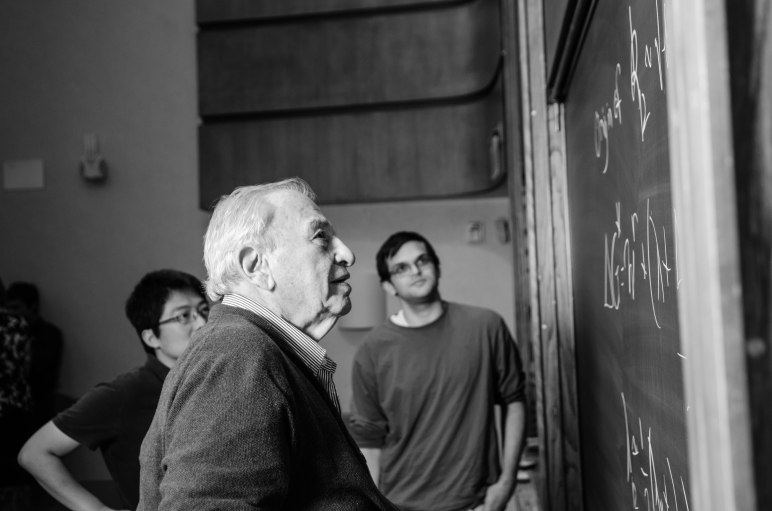 Rudolph Marcus lecturing students following being awarded the Nobel Prize in Chemistry (2000s).Photo Credit : CalTech
Rudolph Marcus lecturing students following being awarded the Nobel Prize in Chemistry (2000s).Photo Credit : CalTech -
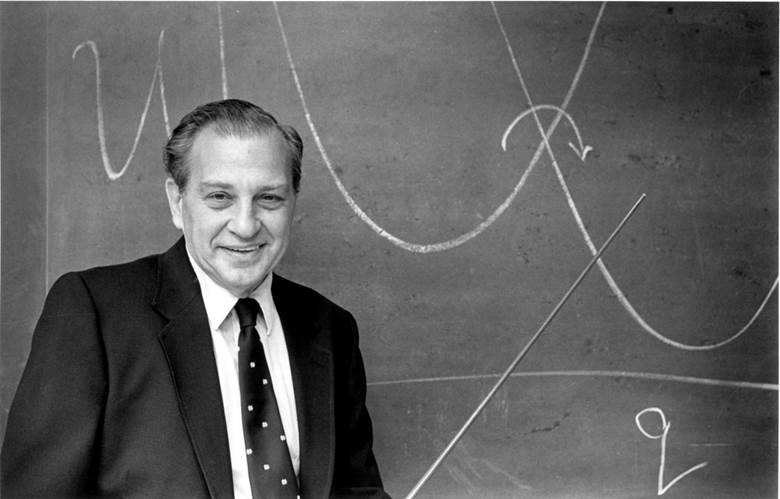 Rudolph Marcus, while teaching at the California Institute of Technology.Photo Credit : CalTech
Rudolph Marcus, while teaching at the California Institute of Technology.Photo Credit : CalTech -
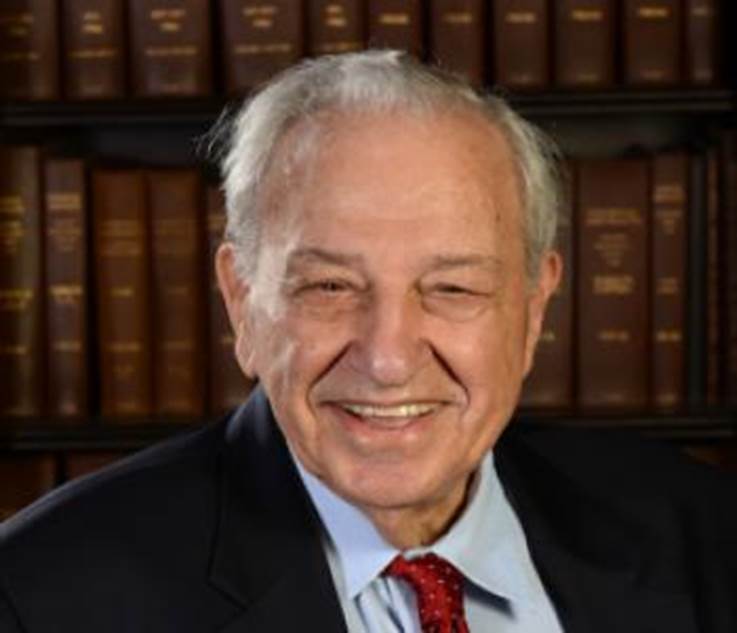 Rudolph Marcus in 2013.Photo Credit : CalTech
Rudolph Marcus in 2013.Photo Credit : CalTech
Rudolph Marcus
Rudolph Marcus is a Montreal-born chemist and one of 22 Canadian Nobel Prize winners.
Born in Montreal, Marcus attended Baron Byng High School. As a baby, his mother wheeled him around the McGill campus, predicting that one day he would graduate from the school. In 1946, Marcus did just that, earning his PhD. He worked at the Polytechnic Institute of Brooklyn, the University of North Carolina at Chapel Hill, the University of Illinois, and the California Institute for Technology. He was also among the first members of the Canada Research Council.
Mid-century, he developed the Marcus theory, postulating that as more force is applied to a reaction, it initially increases, but the rate of the reaction will eventually decrease. The theory, which has been important to our understanding of electron transfer in photosynthesis and cell metabolism, won Marcus a Nobel Prize in 1992.
Marcus has been the recipient of numerous other awards and honours as well, including a visiting professorship at Oxford, election to the National Academy of Sciences, the American Academy of Arts and Science and membership in the Royal Society and the Royal Society of Canada.
Learn more:
http://www.britannica.com/biography/Rudolph-A-Marcus
http://www.nobelprize.org/nobel_prizes/chemistry/laureates/1992/marcus-bio.html
https://www.youtube.com/watch?v=JKhT2dtvj7M
https://www.youtube.com/watch?v=rLOOFekT4k4
https://www.youtube.com/watch?v=OacnpmmMlJ4
https://www.youtube.com/watch?v=e7jJZn24Q-E

-
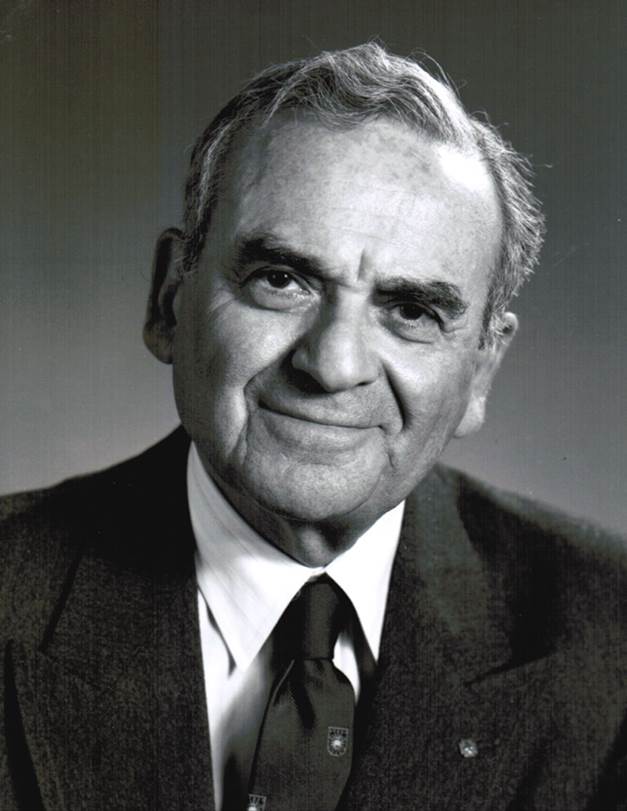 Alan Gold, 1985.Photo Credit : Alex Dworkin Canadian Jewish Archives
Alan Gold, 1985.Photo Credit : Alex Dworkin Canadian Jewish Archives -
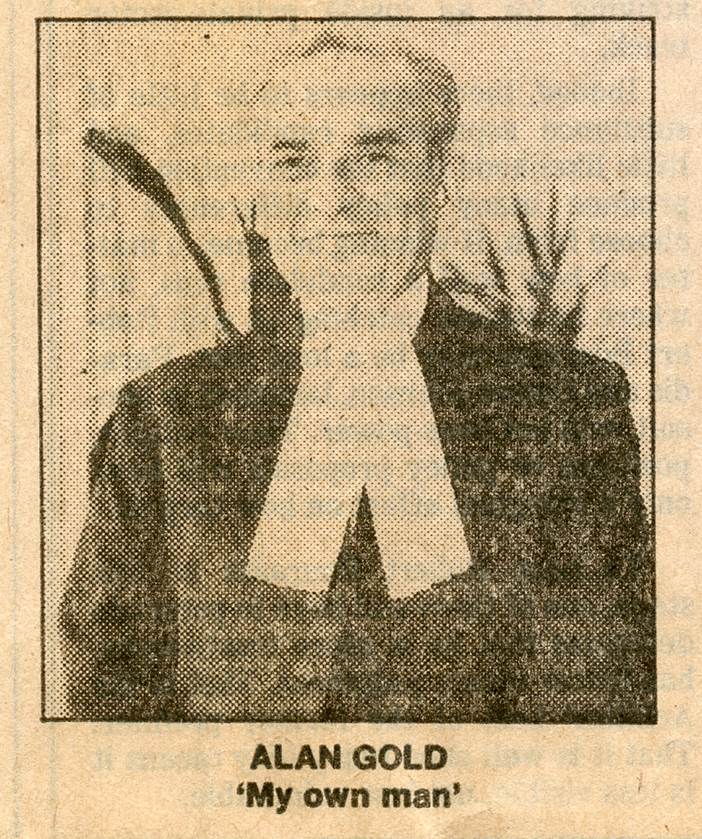 Alan Gold, Montreal Gazette (1960s).Photo Credit : Jewish Public Library - Archives
Alan Gold, Montreal Gazette (1960s).Photo Credit : Jewish Public Library - Archives -
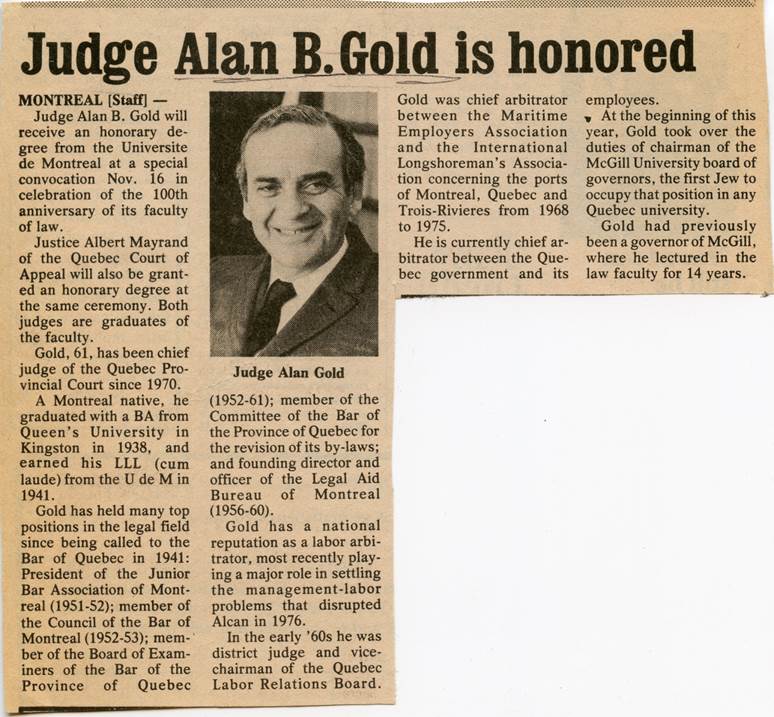 Newsclipping of Alan B. Gold in the Montreal Gazette (1960s).Photo Credit : Jewish Public Library - Archives
Newsclipping of Alan B. Gold in the Montreal Gazette (1960s).Photo Credit : Jewish Public Library - Archives
Justice Alan B. Gold
Alan Gold had a long and prestigious legal career – including serving as Chief Justice of the Quebec Superior Court (1983-1992) – and was especially notable as an effective mediator in high-profile cases.
Born in Montreal, Gold earned his Bachelor of Arts from Queen’s University (1938) and a bachelor’s degree from l’Université de Montréal (1941). During World War II, he served with the Royal Canadian Artillery. He was then called to the Bar of Quebec in 1942.
As an arbitrator, Gold helped avoid a strike by the longshoremen at the Port of Montreal in 1968. In 1990, he negotiated a settlement between the Quebec government and the Mohawk people in the Oka standoff. In 1993, he negotiated a settlement at Nationair, bringing an end to the 16-month lockout of its Flight Attendants. That same year, he represented the government of Saskatchewan in negotiating a settlement in the wrongful conviction of David Milgaard. He also reviewed the out-of-court settlement between former Prime Minister, Brian Mulroney, and the federal government, in Mulroney’s anti-defamation suit during the alleged Airbus affair.
Gold served as Chair of the Board of Governors of McGill University, Chancellor of Concordia University and Associate Governor at the Université de Montréal. He was also the Chairman of the Bar of Montreal’s committee on access to justice in the English language in 1995.
Gold was made an Officer of the National Order of Quebec (1985), an Office of the Order of Canada (1995), and a member of the Academy of Great Montrealers (1997).
Learn more:
http://www.cbc.ca/news/canada/oka-negotiator-and-top-jurist-gold-dies-1.531906
https://www.ordre-national.gouv.qc.ca/membres/membre.asp?id=98
http://ici.radio-canada.ca/nouvelles/Politique/nouvelles/200505/16/004-gold-deces-rb.shtml

-
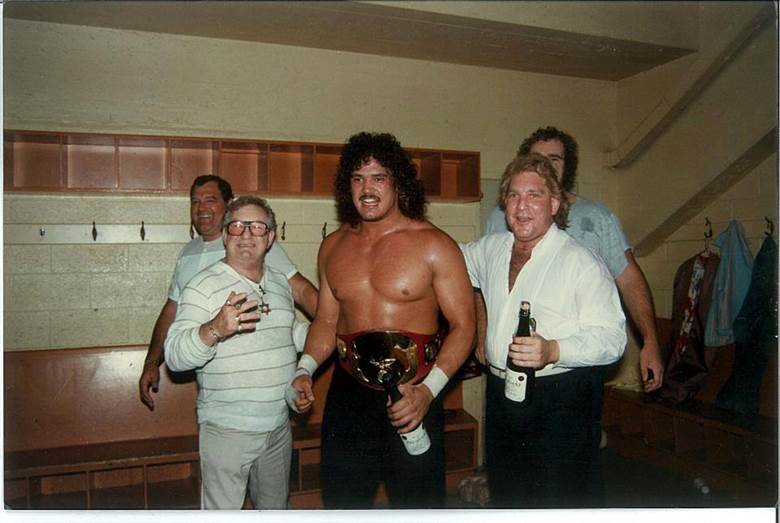 Eddie Creatchman.Photo Credit : Eddie Creatchman fan page
Eddie Creatchman.Photo Credit : Eddie Creatchman fan page -
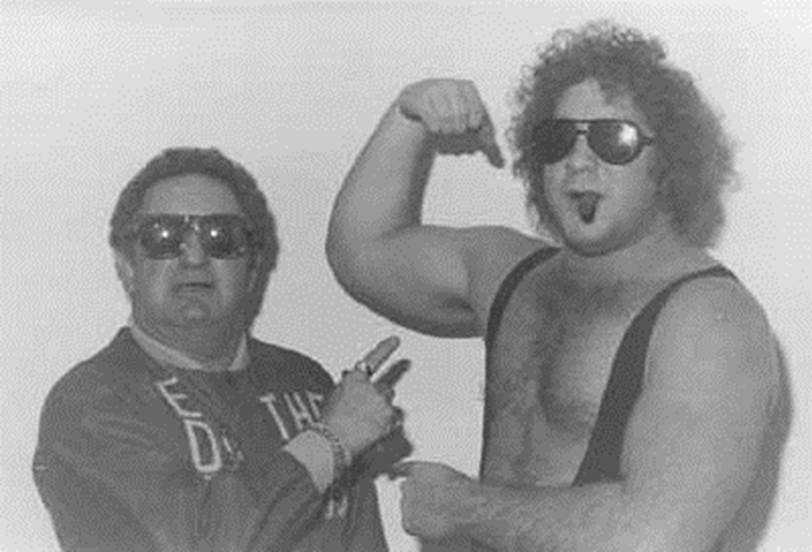 Eddie Creatchman.Photo Credit : Eddie Creatchman fan page
Eddie Creatchman.Photo Credit : Eddie Creatchman fan page -
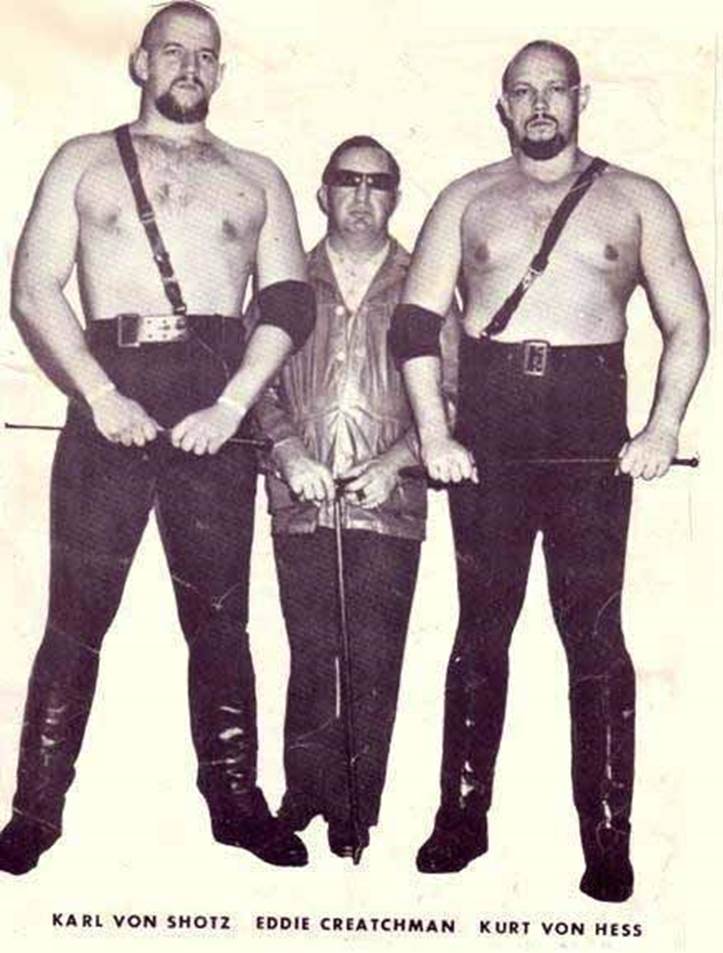 Eddie Creatchman.Photo Credit : Eddie Creatchman fan page
Eddie Creatchman.Photo Credit : Eddie Creatchman fan page -
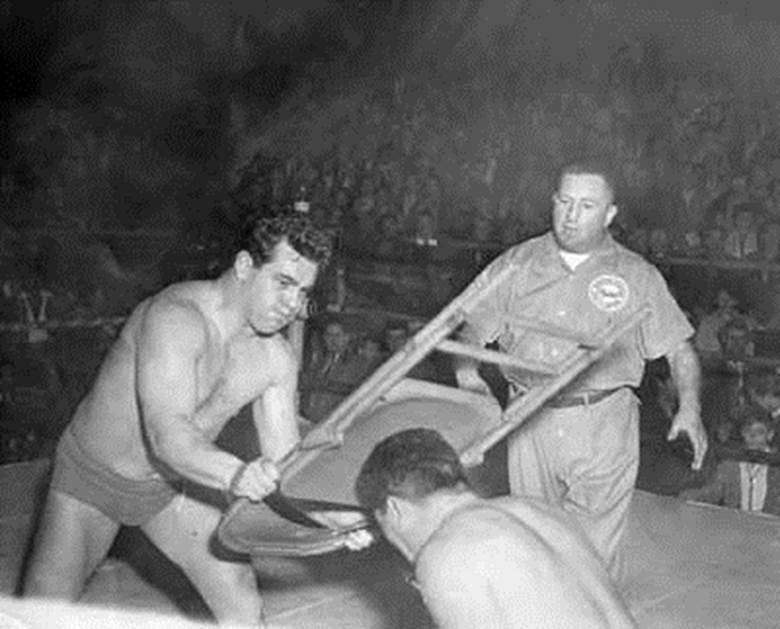 Eddie Creatchman.Photo Credit : Eddie Creatchman fan page
Eddie Creatchman.Photo Credit : Eddie Creatchman fan page -
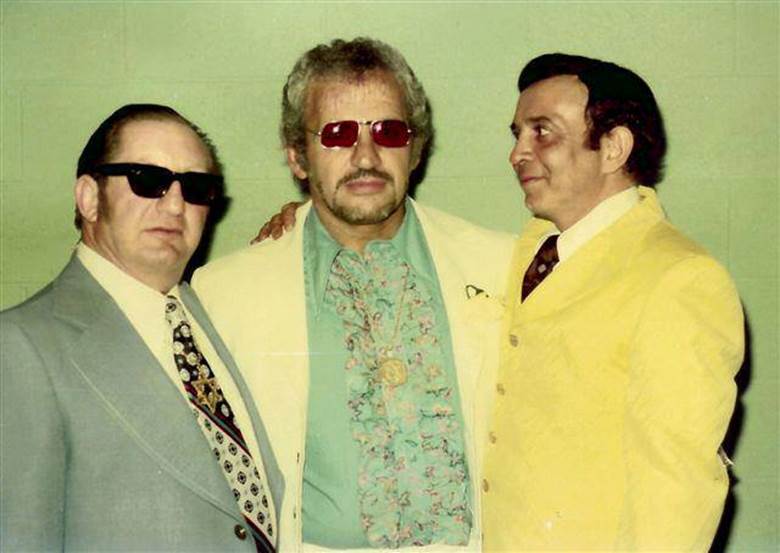 Eddie Creatchman.Photo Credit : Eddie Creatchman fan page
Eddie Creatchman.Photo Credit : Eddie Creatchman fan page -
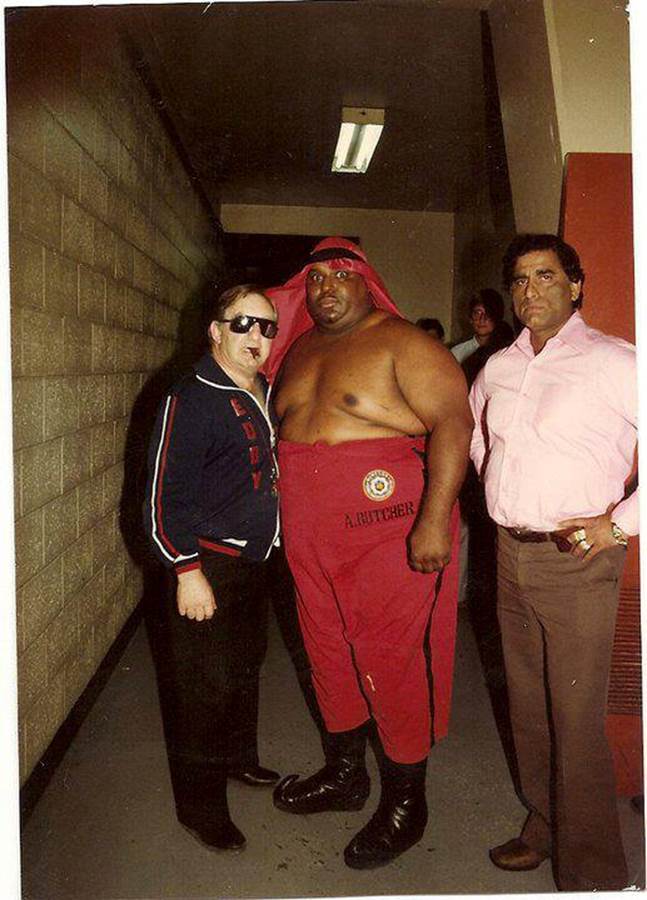 Eddie Creatchman.Photo Credit : Eddie Creatchman fan page
Eddie Creatchman.Photo Credit : Eddie Creatchman fan page -
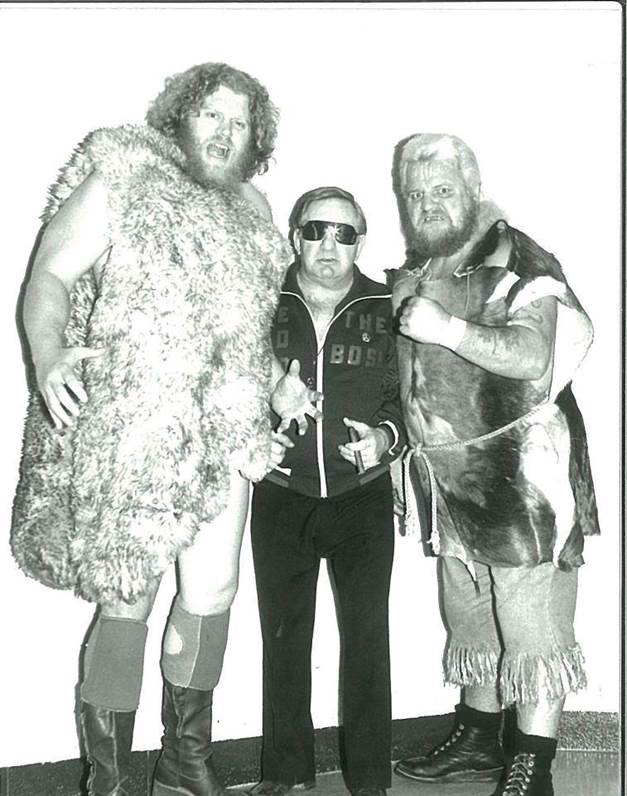 Eddie Creatchman.Photo Credit : Eddie Creatchman fan page
Eddie Creatchman.Photo Credit : Eddie Creatchman fan page -
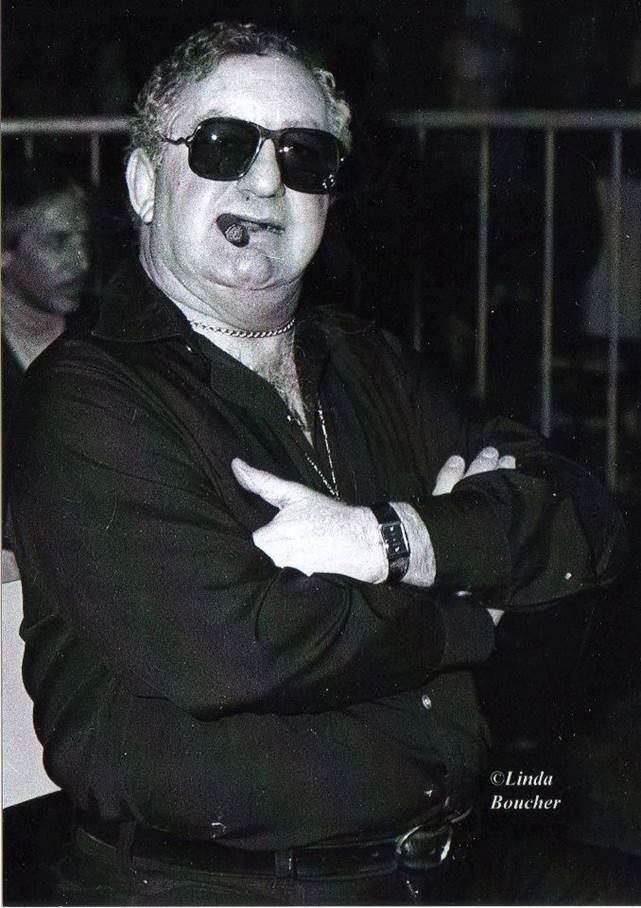 Eddie Creatchman.Photo Credit : Eddie Creatchman fan page
Eddie Creatchman.Photo Credit : Eddie Creatchman fan page
Eddie Creatchman
Eddie Creatchman was a wrestler-cum-promoter who brought innovation to the sport of professional wrestling in Montreal and at large.
Born in Montreal, Creatchman began his wrestling career as a referee, became a wrestler himself, and then transitioned into a managerial role. As a manager, he was called Eddie “the Brain” Creatchman, and his trademark look was sunglasses, a cigar and a large Star of David necklace. He worked for a long time at Gino Brito’s International Wrestling, managing wrestlers such as Tarzan Tyler and Gilles Poisson.
Gino Brito was the son of one of Eddie’s long-time partners, Jack Britton. Britton, born Gabriel Acocella, was a Montreal-based wrestling promoter who began as a wrestler at the age of 16. Later on, he would organize a booking office for little person wrestlers. He formed the Olympia Pro Sports company and also organized bookings for little person wrestlers, some of whom performed in Eddie Quinn’s Montreal Forum shows in the 1950s. He was also an adviser to many wrestlers – credited, for example, with Paul Vachon’s trademark shaved head and full beard.
Learn more:
http://slam.canoe.com/Slam/Wrestling/Bios/brito.html
Pat Laprade, Bertrand Hebert. Mad Dogs, Midgets and Screw Jobs: The Untold Story of How Montreal Shaped the World of Wrestling.
https://en.wikipedia.org/wiki/Eddie_Creatchman
https://www.youtube.com/watch?v=LajWKTgm7Gg
https://www.youtube.com/watch?v=wEMH0J3TNLs
https://www.youtube.com/watch?v=I4pEf97dRak

-
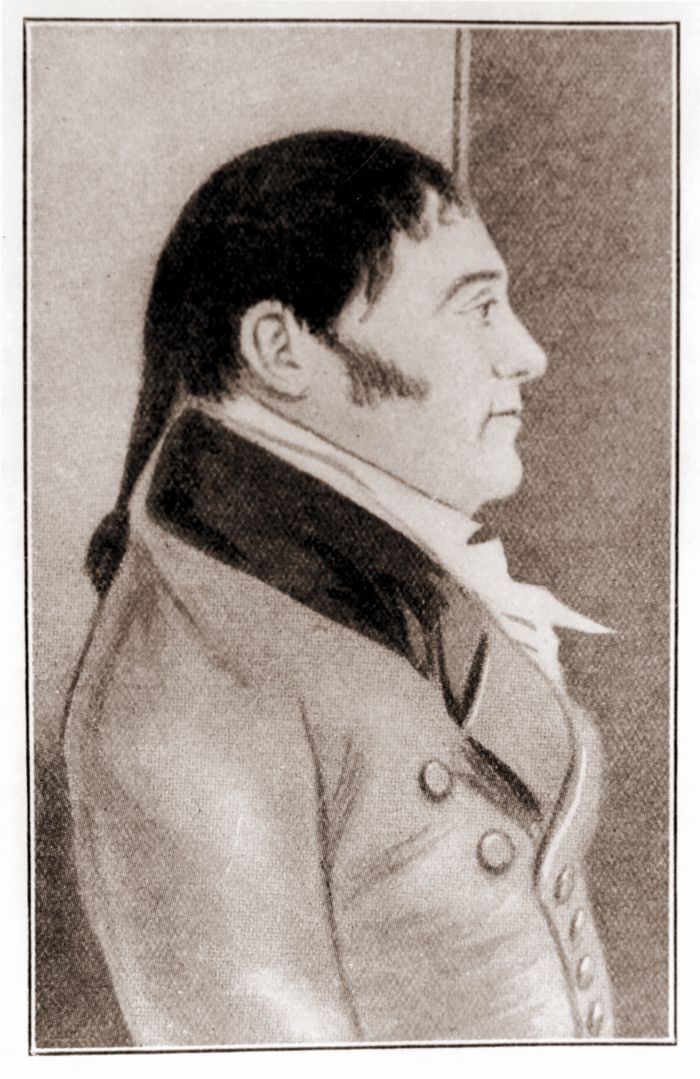 David David.Photo Credit : Jewish Public Library - Archives
David David.Photo Credit : Jewish Public Library - Archives -
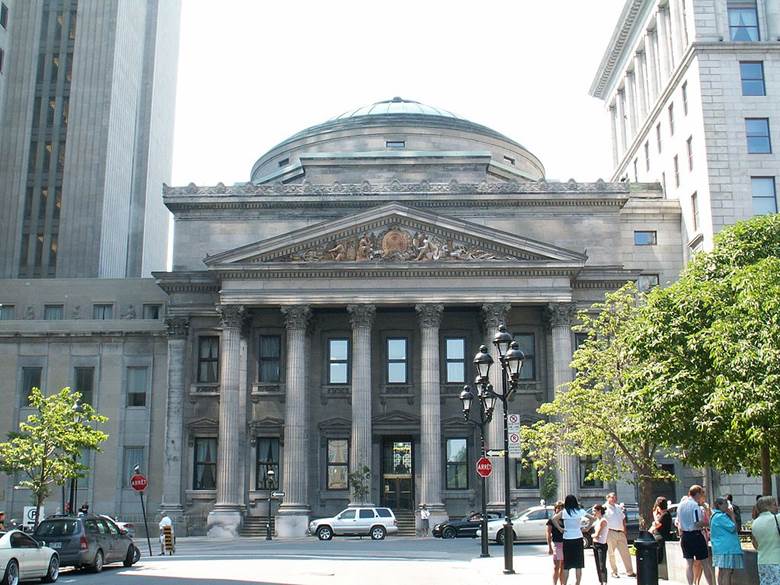 Bank of Montreal Head office, at 129 Saint-Jacques Street, in Montreal. Built in 1845 based on plans by John Wells.Photo Credit : Public domain
Bank of Montreal Head office, at 129 Saint-Jacques Street, in Montreal. Built in 1845 based on plans by John Wells.Photo Credit : Public domain -
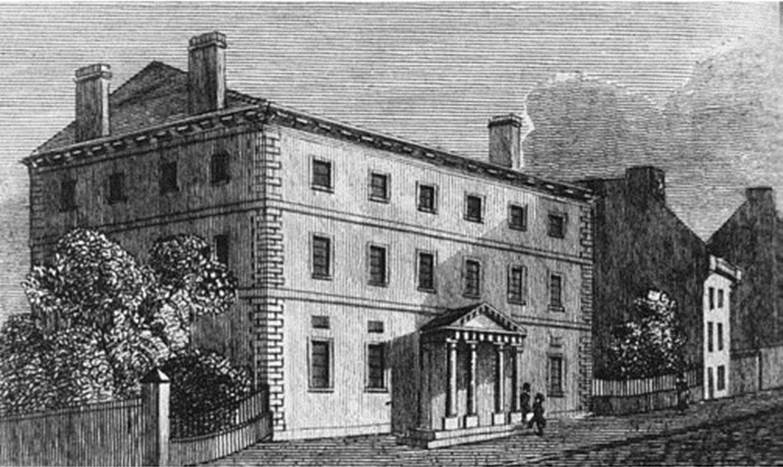 The Bank of Montreal, Canada's first major bank, was incorporated in Montreal, the prime focus of early nineteenth Canadian business and finance.Photo Credit : National Archives of Canada / C-114547
The Bank of Montreal, Canada's first major bank, was incorporated in Montreal, the prime focus of early nineteenth Canadian business and finance.Photo Credit : National Archives of Canada / C-114547 -
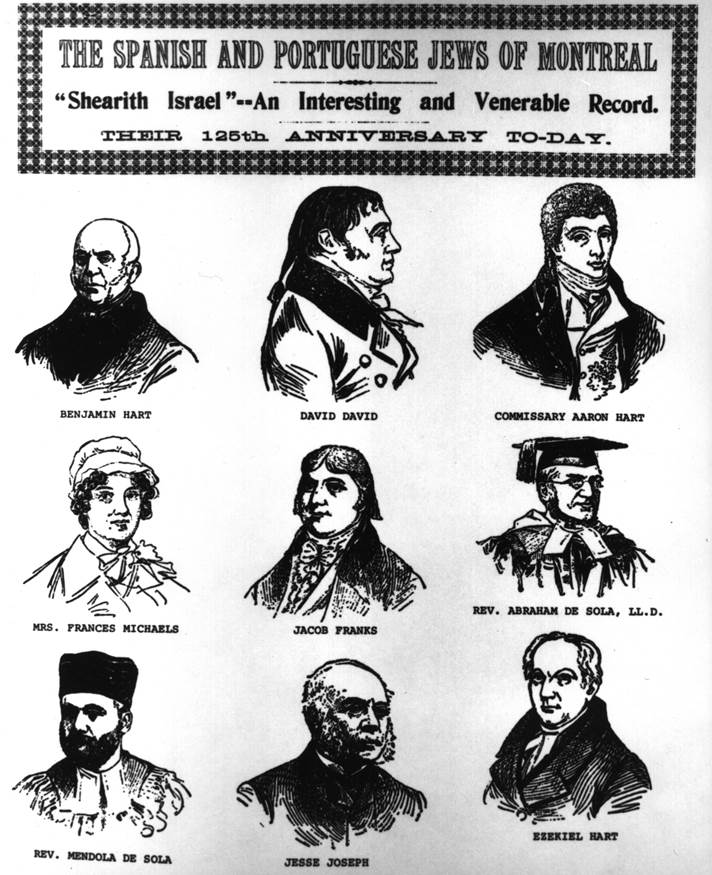 Document depicting the early Jewish settlers of Quebec.Photo Credit : Jewish Public Library - Archives
Document depicting the early Jewish settlers of Quebec.Photo Credit : Jewish Public Library - Archives
David David
David David was the first Jewish baby born in Canada, who later became a founder of the Bank of Montreal.
David was the first Jewish baby ever born in Canada, the eldest son of Lazarus David and Phebe Samuel. He grew up within the small Jewish community there, numbering perhaps fewer than one hundred at the time. His father, Lazarus, had established himself as a wealthy trader and land-owner. David, the son, began as a fur trader, eventually connecting with the North West Company and being admitted to the Beaver Club in 1817. He owned a store in Montreal where he sold teas, spices, groceries, hardware, dry goods, crockery, and glassware while trading in wheat, and doing business with the military. A founding director of the Bank of Montreal, he served in that position from 1818 to 1824. In 1807, he was appointed an officer in the militia.
David was one of the first to be appointed “life-governor” of the Montreal General Hospital. He also served on the board of the Lachine Canal Company. Besides large urban real estate holdings, he owned four thousand acres in Lower Canada. At his death, his estate was estimated at over $300,000 (the equivalent of over $4,000,000 today). The land on which the first synagogue in Canada was built, the Spanish and Portuguese on Little St. James Street, was donated to the congregation by David.
Learn more:
Jacobson, Maxime. ———. “Struggles and Successes: The Beginnings of Jewish Life in Canada in the Eighteenth Century.” In Canada’s Jews: In Time, Space, and Spirit, edited by Ira Robinson. Boston: Academic Studies Press, 2013).
Lapidus, Steven. “The Golden Century? Canada’s Jews in British North America.” In Canada’s Jews: In Time, Space, and Spirit, edited by Ira Robinson. Boston: Academic Studies Press, 2013).
Sheldon J. Godfrey & Judith C. Godfrey, Search Out the Land: The Jews and the Growth of Equality in British Colonial America, 1740-1867, (Montreal & Kingston: McGill-Queens University Press, 1995)
Tulchinsky, Gerald. Branching Out: The Transformation of the Canadian Jewish Community. (Toronto: Stoddart, 1998).
http://www.biographi.ca/en/bio/david_david_6E.html

-
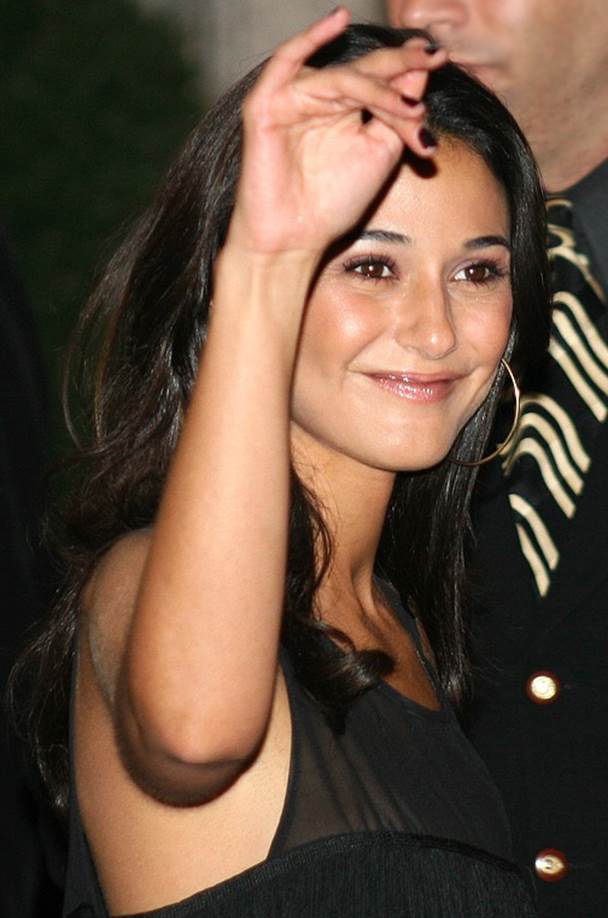 Emmanuelle Chriqui.Photo Credit : gdcgraphics
Emmanuelle Chriqui.Photo Credit : gdcgraphics -
 Emmanuelle Chriqui.Photo Credit : The Cosmopolitan of Las Vegas
Emmanuelle Chriqui.Photo Credit : The Cosmopolitan of Las Vegas -
 Emmanuelle Chriqui.Photo Credit : Facebook
Emmanuelle Chriqui.Photo Credit : Facebook
Emmanuelle Chriqui
Emmanuelle Chriqui is a popular actress perhaps best known for her breakthrough role as Sloan McQuewick in HBO’s Entourage.
Chriqui is the daughter of Sephardic Jewish parents from Morocco who practiced Orthodox Judaism. Her mother was born in Casablanca, and her father, in Rabat. When Chriqui was 2, her family moved from Montreal to Toronto, where her brother paid for her to take acting lessons. She also studied acting at Unionville High School.
Her first professional gig was in a McDonald’s commercial at age 10. In the mid-90s, she moved to Vancouver, and guest-starred on television series including Forever Knight, Once a Thief, and Are You Afraid of the Dark?
Chriqui’s first Hollywood role was in Detroit Rock City. She went on to star in movies like You Don’t Mess with the Zohan, National Lampoon’s Adam & Eve and Cadillac Records.
Chriqui has been nominated for a Best Actress DVD Exclusive Award for her performance in 100 Girls and a Choice Lip Lock Teen Choice Award for On the Line. She also won the Standout Performance Trophy at the Young Hollywood Awards.
Learn more:
https://www.youtube.com/watch?v=HvMNFzp7Vc0
https://www.youtube.com/watch?v=acJxFC9yfGc
https://www.youtube.com/watch?v=zJjeO7wHTuI
https://www.youtube.com/watch?v=2hVqG-P4G9c

-
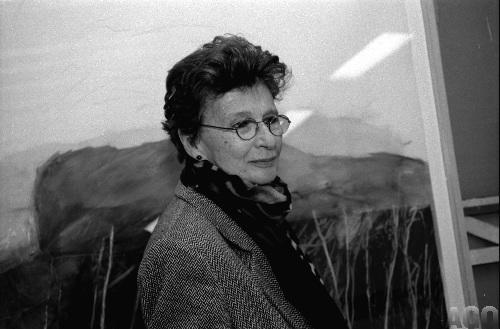 Photo Credit : Artmatters
Photo Credit : Artmatters
Betty Goodwin
Born in Montreal, Betty Goodwin was an internationally-renowned Jewish female artist known for investigating and “spiritualizing” found objects.
A child of the Main, Goodwin was the only offspring of Romanian Jewish immigrant parents. Her father was a significant member of Montreal’s shmata, or ready-made clothing, industry, and owned a vest factory in the Lower Plateau. When she was only nine, her father got sick and passed away, a tragedy which would go on to permeate much of her artwork.
After graduating from high school, Goodwin studied at Valentine’s Commercial School of Art in Montreal, and then launched her career as a painter and printmaker in the late 1940s. Largely self-taught, she initially produced still-life paintings and black-and-white scenes of Montreal’s bustling Jewish East Side. These illustrations brought her a great deal of attention, but Goodwin ended up destroying most of them, and searching for new modes of expression.
In 1968, she enrolled in a printmaking course under renowned Quebecois artist Yves Gaucher at Sir George Williams University (now Concordia University). During this course, Goodwin began experimenting with found objects—vests, parcels, shirts, etc.—to explore themes of loss, grief and miscommunication. These etched prints catapulted her work into the international spotlight.
During the 1980s, Goodwin returned to drawing, using graphite, charcoal and oil pastels. One of her most popular series was a sequence of large scale works entitled Swimmers (1982-1988), which featured solitary, floating or sinking bodies.
Goodwin’s drawing, printmaking, sculptures and installation art earned her many awards, including the Governor General’s Award and the Order of Canada, the Harold Town Prize, the Gershon Itzkowitz Prize and the Prix Paul-Emile Borduas. Her work has been exhibited in Canada, the US and Europe. In 1995, she was chosen to represent Canada in the Venice Biennial, and in 1996, she was exhibited at the National Gallery of Canada, Betty Goodwin: Signs of Life.
Learn more:
http://www.gallery.ca/en/see/collections/artist.php?iartistid=2098
http://becontemporary.com/art-Goodwin.php
http://www.thecanadianencyclopedia.ca/en/article/betty-goodwin-profile/
https://artmatters.ca/wp/2012/02/8222/
http://artdaily.com/news/39753/AGO-to-Exhibit-the-Work-of-Eva-Hesse–Betty-Goodwin-and-Agnes-Martin#.VzH5hMv2bcs
http://www.theglobeandmail.com/arts/ago-to-showcase-female-post-war-artists/article1375597/
http://www.ago.net/kitty-scott-on-betty-goodwin
https://www.youtube.com/watch?v=ihDV-p3aSSY

